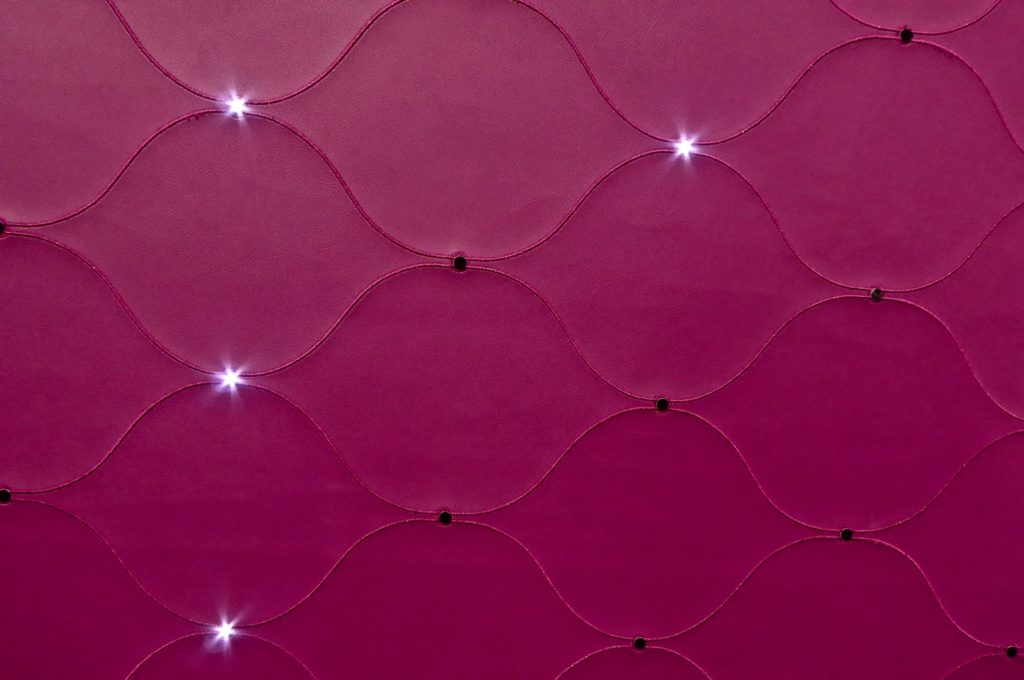Collaborative, long-term efforts produce successful new products and applications.
by Marie O’Mahony

Harvard professor and author of The Innovator’s Dilemma (1997), Clayton M. Christensen, identified two forms of innovation: sustaining and disruptive. The former he classifies as that which improves product performance, while the latter introduces a very different value proposition to what was previously available. In each of the case studies outlined in his book, disruptive technologies have led to the failure of companies that had been industry leaders.
The new market entrant, on the other hand—often a small start-up, though not necessarily inexperienced—can face its own financial and logistical challenges. In this, the first of two articles on the topic of “innovation,” we take a closer look at some of the barriers to innovation and solutions from success stories within the advanced textile industry.
Making innovation work
The 7Sphere Hydro_bot smart sweat technology ski jacket uses an electronic membrane to pump moisture away from the body to the outside of the jacket where it can more easily evaporate. It promises to be ten times more efficient at removing moisture than more conventional membranes, protecting the wearer from post-activity chill that can be caused by trapped moisture next to the skin.

The innovation was an ISPO Award 2019 Gold Winner, the end result of a successful partnership among primarily Swiss industry participants that included:
- Osmotex AG, the technology innovator
- Schoeller Textil AG, textile manufacturer
- KJUS, Norwegian sportswear brand
- Applycon, wearable electronics (Czech company)
- Swiss Center of Electronics and Micro Technology (CSEM), engineering R&D
- Swiss Federal Laboratories for Materials Science and Technology (Empa), electro-chemistry, R&D, testing
- Collaboration with several additional universities and research labs
The first time I spoke with Trond Heldal, director of R&D at Osmotex, was in 2012 when few of these partners were in place and the technology membrane that he provided for the Magical Materials exhibition that I was a consulting curator for at Science Gallery, Trinity College Dublin, consisted of a small membrane with two electrodes, a battery and petri dish that was filled with water to demonstrate the technology. It has taken seven years to get from proof of concept to “overnight success” with an award-winning commercial product.
As Richard Branson, British entrepreneur, said, “There are no quick wins in business; it takes years to become an overnight success.”
A cursory glance through the list of Hydro_bot stakeholders highlights the very different fields involved. Each has their own set and ranking of priorities so that for the textile manufacturer and brand designer, a soft handle may be high on the list, but less so, or not at all, for the electrical engineer.
The pace of technological development also varies enormously. Schoeller, for instance, has many years of expertise and experience in developing new membrane technologies, so that even if an innovation is radical, it can still be classed as a sustaining innovation under Christensen’s definition.
Applycon was founded more recently in 2005 and, though focusing on bringing together interdisciplinary knowledge for wearable technology and intelligent textiles, they are dealing with rapidly advancing technologies and doubling the challenge by looking to integrate them.
Collaboration is key, as Milan Baxa, managing director with Applycon explains. “We aspire to be a significant force in the field of wearable electronics and its integration into mass production, and our collaboration with Osmotex represents an exciting innovation for us to be involved in.”
Looking ahead to future developments, Trond Heldal, director of R&D and operations for Osmotex, is enthusiastic. “Our biggest challenge now is to make it more affordable across more brands,” Heldal says.
Technically, they also want to make the membrane even thinner, and are also looking to integrate further technologies, such as sensors. Heldal is aware, however, of the roadblocks. “It’s like micro-computers were in the 1980s, no one knows how much is possible with very different skills coming together,” he says.
Schoeller communications manager Dagmar Signer says, “Innovation is in our genes,” a mantra that is passed down from CEO Siegfried Winkelbeiner. The process of implementing this falls to teamwork, starting in the laboratory developing small samples and bringing the decision-making process to the whole team to decide what to take forward and what route to follow.
As Signer says, “it’s a very collegiate process.” While each of these stakeholders has come to the project at different times and with their own ways of working, the common factor is a shared belief in the goal, paired with pragmatism and recognition of the very real challenges to be faced.
Interdisciplinary skills
The St Gallen region of Switzerland is noted for its long history of embroidery; today, notable textile companies based there include Forster Rhoner AG. Founded in 1904, it remains a family-run business producing high quality embroidery for haute couture, ready-to-wear and lingerie.

The company branched out with a new business unit, established in 2011. Forster Rohner Textile Innovations filed patents for conductive yarns providing the foundation for e–textile lighting and textile sensor developments using core competencies in embroidery. The company describes its activities as “[combining] material science with visionary embroidery technology and electronics.”
Lighting for interiors is a key market, due in large part to consumer acceptance. As Adis Causevic, head of technical development, observes, “People are more accepting of a phone [strapped] on the arm rather than a T-shirt.” The phone is a device that can perform a number of functions, rather than relying on several devices for separate monitoring and communication functionalities. Causevic says making this connection is a big issue for wearable technology, while in other applications (a curtain, for example), it is not.

The pace of technological change and its complexity gives rise to a greater need for interdisciplinary teams to overcome obstacles that are sure to arise. Though trained as an electrical engineer, Causevic still sees textile skills and knowledge remaining the core competencies within the company.
He sees the length of time that it takes to develop new products as an obstacle; with the pace of technology moving so fast, there is a very real risk of being copied. However, once functionality and reliability have been established, other factors come into play. The consumer price would be one, but quality and the reputation that comes with a particular brand identity is increasingly important.
In each of these case studies, there are commonalities in identifying the need for cross-disciplinary skills, whether in-house or through collaboration. One factor that undoubtedly helps is the geographical proximity, as it was for the development of Hydro_bot with its partners in or near Switzerland. In a digital age, being able to sit next to people in a Lab space and work through a problem still has much to recommend it.
Marie O’Mahony is an industry consultant, author and academic. She the author of several books on advanced and smart textiles published by Thames and Hudson and visiting professor at the Royal College of Art (RCA), London.
 TEXTILES.ORG
TEXTILES.ORG


